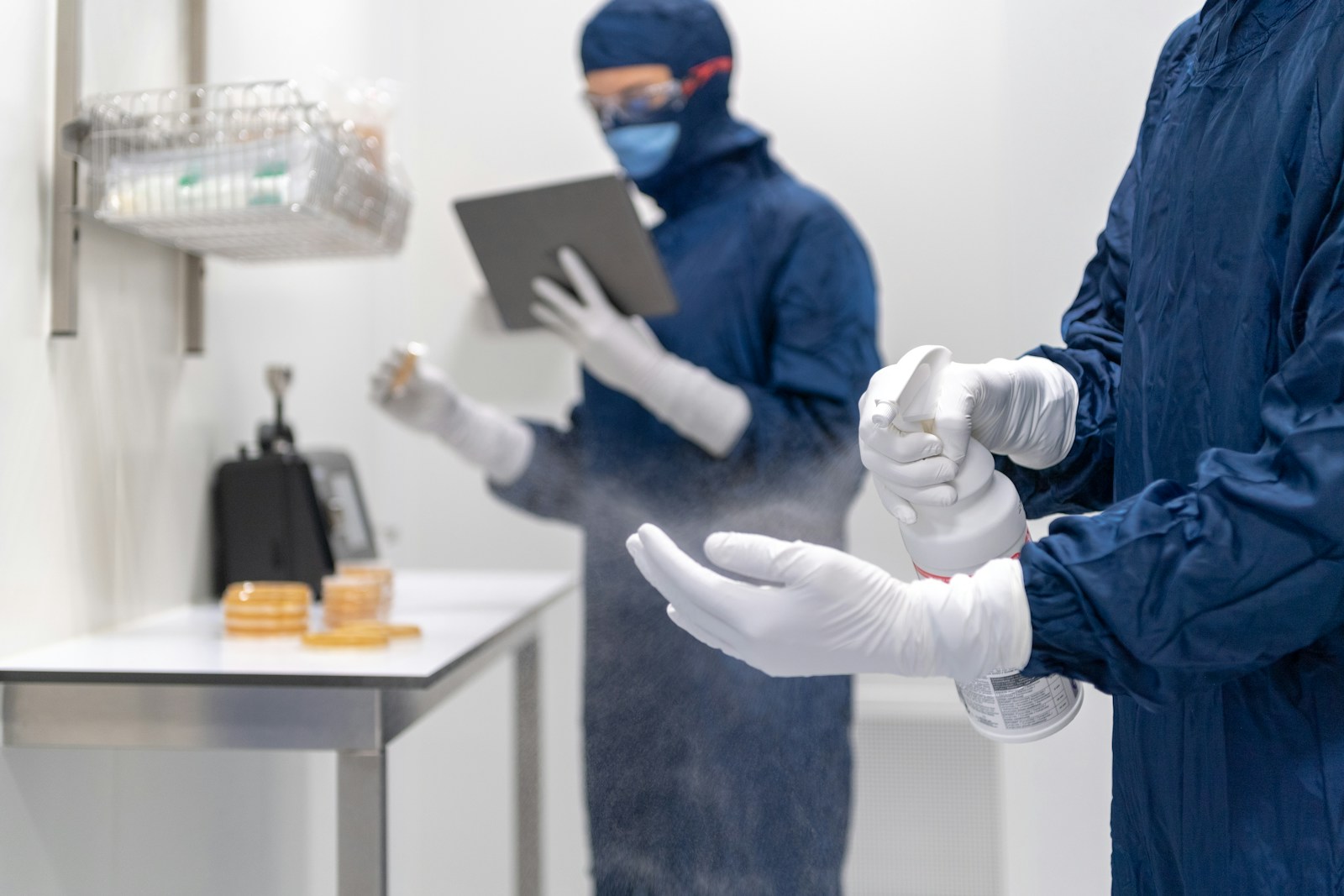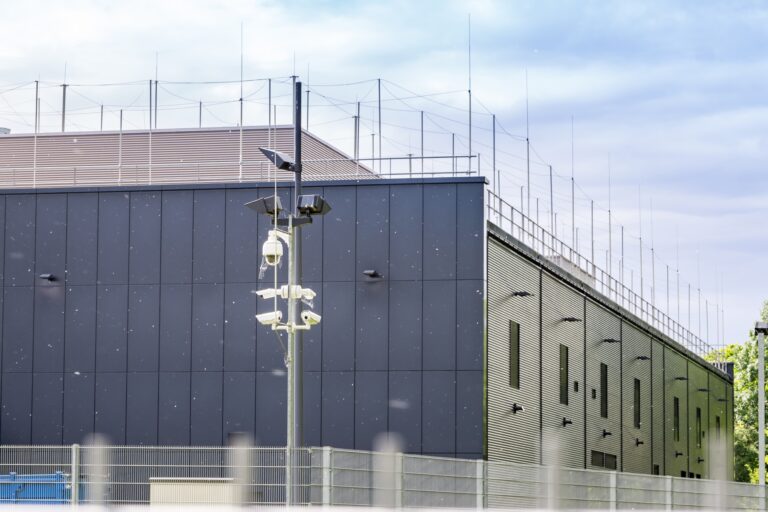Even a small humidity change, just 1%, can ruin a pharmaceutical batch and cost millions. That’s why cleanroom humidity control is essential. From our work with clients in semiconductor, pharmaceutical, and data center industries, we’ve seen how good environmental controls protect both products and profits.
The global cleanroom technology market continues to grow as industries from pharma to semiconductors invest in stricter contamination control and advanced environmental systems to meet regulatory and product quality demands. While particle filtration is important, humidity management often decides if a cleanroom meets regulations and keeps products safe.
Understanding Cleanroom Humidity: Why Every Percentage Matters
Cleanroom humidity control isn’t just about comfort. It prevents failures that can shut down entire production lines. When humidity levels drift outside optimal ranges, the problems spread quickly through your operations.
High humidity creates multiple risks:
- Bacterial and microbial growth flourish in moist environments
- Metal equipment and components suffer accelerated corrosion
- Condensation forms on sensitive surfaces, causing short circuits
- Photolithography, a key step in making semiconductor chips, degrades, reducing production yields
- Pharmaceutical powders absorb moisture, leading to clogged equipment and crumbling tablets
Low humidity brings different challenges:
- Static electricity buildup increases dramatically
- Electrostatic discharge (ESD) can damage sensitive electronic parts very quickly
- Worker discomfort leads to increased particle shedding
- Material cracking and brittleness affect product quality
The sweet spot varies by industry. Semiconductor cleanrooms typically maintain 30-50% relative humidity, while pharmaceutical facilities may require even tighter ranges depending on specific processes. Missing these targets doesn’t just affect quality, it can trigger regulatory violations and costly shutdowns.
The Science Behind Cleanroom Humidity Control
Cleanroom humidity control depends on the balance of temperature, moisture, and airflow. When one changes, the others shift as well, so HVAC systems must adjust quickly to keep conditions stable.
Temperature directly affects how much moisture air can hold. As air cools, humidity levels change. Because of this connection, HVAC systems must control temperature and moisture together using coordinated controls.
Airflow also shapes humidity levels across the cleanroom. Proper airflow prevents damp spots and dry areas. Laminar flow systems help maintain even conditions, but they require careful design to ensure air is distributed evenly.
Outside conditions such as weather and seasonal changes can influence indoor humidity. Monitoring systems track these shifts and guide the HVAC system to make real time adjustments.
Manufacturing processes can also affect humidity. Steps like steam cleaning, chemical reactions, or equipment operation may add or remove moisture. Control systems must respond to these changes to keep cleanroom conditions within required limits.
Three Proven Methods for Controlling Cleanroom Humidity
1. Air Conditioning and Mechanical Refrigeration Systems
Air conditioning and mechanical refrigeration systems are the most common humidity control method in cleanrooms. It uses standard HVAC cooling, but adjusted for strict humidity control. The system cools air below its dew point so water vapor turns into liquid. The extra moisture drains away, leaving the air drier.
How it works: Cooling coils inside the air handling unit drop the air’s temperature below its dew point (the point where air becomes fully saturated). As humid air passes over the cold coils, water vapor condenses and drains off. The dried air is then reheated to the right room temperature before being sent into the cleanroom.
This method is widely used because it is proven, easy to maintain, and integrates well with existing HVAC systems. It works well for cleanrooms with moderate humidity requirements and offers a cost effective way to manage both heat and moisture.
The main drawback is energy use. Cooling and reheating air increases power demand, and mechanical refrigeration systems are less effective at achieving very low humidity levels. Careful monitoring is also required to avoid overcooling.
2. Desiccant Dehumidification Systems
Desiccant dehumidification systems remove moisture using materials that naturally absorb water vapor from the air. This approach is often used in cleanrooms that require very low humidity levels that standard HVAC cooling cannot achieve.
How it works: Humid air passes through a wheel or chamber coated with desiccant. The desiccant pulls water vapor out of the air, leaving it dry. Later, the desiccant is heated so it can release the stored moisture and be reused.
These systems are highly effective at maintaining low humidity and provide stable control even in demanding conditions. They perform well where cooling based methods struggle, making them a reliable option for environments with strict moisture limits.
The main tradeoff is cost and energy use. Desiccant systems are more expensive to install and operate, require regular maintenance, and use additional energy to heat and recharge the desiccant material.
Uses: Particularly valuable for semiconductor manufacturing, battery production, and pharmaceutical processes requiring extremely dry conditions.
3. Integrated Hybrid Approach
An integrated hybrid approach combines air conditioning with desiccant dehumidification to deliver more reliable humidity control in cleanrooms. This creates a balanced setup that improves performance and saves energy.
In this setup, air conditioning handles moderate humidity levels, while desiccant systems manage very low humidity requirements. This shared workload allows each system to operate in its most efficient range, which helps lower total energy demand.
The hybrid approach also adds resilience. If one system experiences issues, the other can continue supporting stable conditions. This flexibility makes the setup well suited for cleanrooms with changing process demands or fluctuating outdoor conditions.
Based on experience in critical infrastructure environments, combining air conditioning and desiccant systems often provides the most consistent humidity control while helping control long term operating costs.
Industry-Specific Humidity Requirements
Semiconductor Manufacturing
Semiconductor cleanrooms need strict humidity control. This prevents static discharge and protects chip-making processes like photolithography. Typical requirements include:
- Relative Humidity: 30-50% RH
- Allowed Range: ±2% RH
- Special Considerations: ESD protection, chemical compatibility, ultra-low particle counts
Pharmaceutical Production
Pharmaceutical cleanrooms must prevent microbial growth while maintaining product stability:
- Relative Humidity: 35-65% RH (varies by product)
- Allowed Range: ±5% RH
- Regulatory Compliance: FDA, EMA, and cGMP requirements
- Special Considerations: Sterility maintenance, powder handling, tablet compression
Data Center Cleanrooms
Server environments require humidity control to prevent static discharge and equipment corrosion:
- Relative Humidity: 40-60% RH
- Allowed Range: ±5% RH
- Special Considerations: Equipment protection, energy efficiency, 24/7 operation
Advanced Control Technologies and Monitoring
Modern cleanroom humidity control uses smart systems that adjust conditions in real time and help prevent problems before they happen.
Sensor Networks: Humidity sensors are placed across the cleanroom to track conditions nonstop. If levels start to shift, the system responds automatically to keep things steady.
Predictive Tools: By studying past data and outside weather, advanced systems can predict humidity changes and make adjustments before issues occur.
Remote Monitoring: Cloud-based tools enable 24/7 monitoring and instant alerts, so teams can respond right away if conditions move out of range.
Energy Efficiency and Cost Optimization
Humidity control systems use a lot of energy, so improving efficiency is key to lowering costs and supporting sustainability.
Energy savings come from using smarter system strategies. Heat recovery allows waste heat from dehumidification to be reused for heating or drying. Variable speed drives adjust fans and pumps to match real demand instead of running at full power. Economizer cycles take advantage of cool outdoor air to reduce mechanical cooling, while thermal storage shifts cooling use to low demand periods.
With these methods, studies show cleanrooms can cut energy use by 20–30% while keeping humidity steady.
Maintenance and Troubleshooting Best Practices
Keeping humidity stable means sticking to a regular maintenance rhythm and resolving problems quickly. Daily checks should focus on alarm systems and humidity readings to catch early signs of drift. Weekly tasks center on verifying that sensors remain accurate and that control responses are working as expected. Monthly work includes inspecting and cleaning air filters, coils, and drains to prevent buildup that can affect system performance. More thorough calibration of sensors and verification of control logic on a quarterly basis help maintain reliable readings over time. Once a year, a comprehensive performance test and system optimization review ensure the entire setup continues to meet specifications.
Common issues often point to clear causes. Persistent humidity drift is frequently traced to sensor calibration problems or unnoticed air leaks. Uneven humidity distribution usually signals airflow problems or poor mixing. Sudden energy spikes can indicate inefficiencies in equipment or control system faults. Addressing these root causes quickly helps prevent downtime and keeps cleanroom conditions within required limits.
Regulatory Compliance and Documentation
Cleanroom humidity control must meet strict regulatory and industry standards, and proper records are essential to demonstrate compliance. Key standards often referenced across industries include:
- ISO 14644: International cleanroom standards for air and environment.
- FDA 21 CFR Part 211: U.S. pharmaceutical manufacturing rules.
- SEMI Standards: Environmental requirements for semiconductor facilities.
- ASHRAE Guidelines: HVAC design and operation standards.
To prove compliance in audits and reviews, facilities must keep clear records of environmental monitoring and system performance. This includes ongoing logs of humidity and other parameters, certificates showing sensors and instruments were properly calibrated, notes of maintenance work, and records of problems and fixes. Validation reports that show installation and performance testing was done also help demonstrate that systems are working as expected. Meeting these standards and keeping proper records helps prove compliance and protects product quality.
Choosing the Right Humidity Control Solution
Choosing the right humidity control system means looking at your needs, limits, and long-term goals.
Key Decision Factors:
- Target humidity range and tolerance
- Cleanroom classification and size
- Process requirements and sensitivities
- Energy efficiency goals
- Maintenance capabilities and resources
- Industry rules you must follow
- Budget constraints and ROI expectations
Partner with Cleanroom Infrastructure Experts
Effective cleanroom humidity control requires more than just equipment. It demands expertise in system design, integration, and ongoing improvement. At Camali Corp, our 35+ years of experience in critical infrastructure systems enables us to design, install, and maintain humidity control solutions that meet your exact requirements.
Our complete approach includes:
- Custom system design tailored to your specific processes and requirements
- Professional installation by certified technicians with cleanroom expertise
- 24/7 monitoring and support to ensure continuous optimal performance
- Preventive maintenance programs that maximize system reliability and efficiency
- Help meeting regulations for FDA, ISO, and industry-specific standards
Building a new cleanroom facility or upgrading your systems? Our team can help you control humidity while saving energy and costs.
Ready to optimize your cleanroom humidity control? Contact our experts at 949-580-0250 or schedule a consultation to discuss your specific requirements and learn how we can help ensure your cleanroom operates at peak performance.



